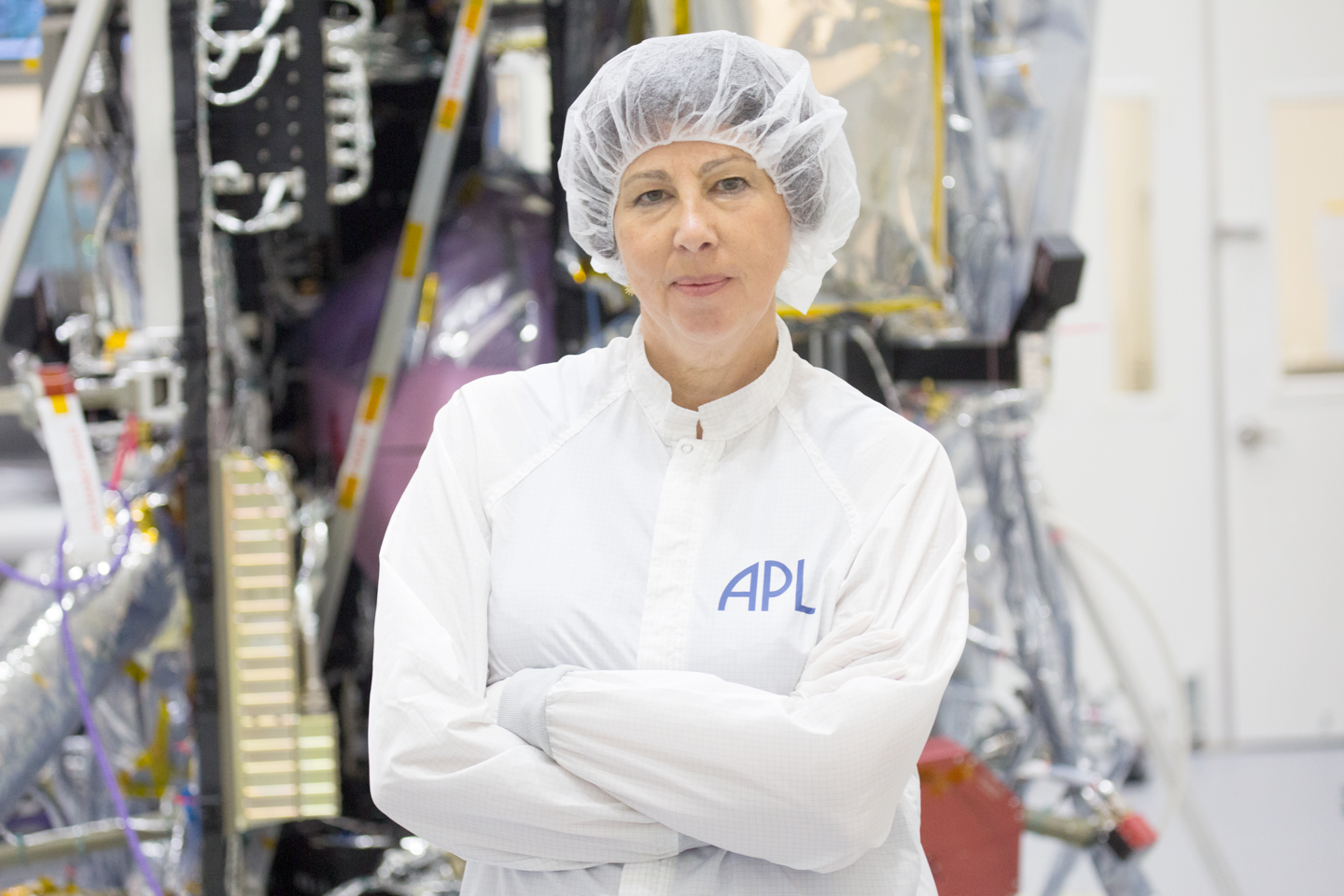Johns Hopkins University / Applied Physics Lab
 I was born in a small market town called Hitchin, about 40 miles north of London, England.
I was born in a small market town called Hitchin, about 40 miles north of London, England.
I work at the Johns Hopkins University/Applied Physics Laboratory, where I am the project scientist for NASA’s Parker Solar Probe mission and also the Chief Scientist for Heliophysics.
When I was 9 months old, Neil Armstrong first walked on the moon. This occurred during the night in England. I apparently stirred in my crib so my father propped me up in front of the TV so that I could watch this momentous event. He gave me a running commentary through the entire thing and now takes full credit for my interest in space. When I was a young child he would explain to me how the planets rotated around the Sun and point out stars and planets to me at night.
My earliest memory about the Sun is learning that it is a star and that the Earth rotates around it. I got interested in science through my father's love of everything to do with space and space exploration, in particular the Mercury and Apollo programs. But what ultimately inspired me to become a solar-terrestrial physicist was seeing an aurora in Alaska.
I went to an all girls school where I was actively encouraged to study the sciences. I knew that I wanted to be a scientist but was not sure which type. I discovered that I fainted every time we had to do dissections in Biology to the point that the teacher would tell me to stay home when they were scheduled. Then my lab partner in Chemistry was worrisome as she would blow up test tubes, spill concentrated acid on herself and leave the fume cupboard door open, practically gassing the whole class. She was going to do Chemistry at college, so I decided that this was too frightening as there may be others like her around. So I took the safe option of Physics!! I also loved the mathematical aspect of the subject and really enjoyed astronomy.
I went to Imperial College of Science Technology and Medicine in London, where I studied Physics at college level. I then went to the University of Surrey, where I took a Masters in Telecommunications and Satellite Engineering. I quickly realized that I was definitely a scientist and not an engineer. I was regularly told that I asked the "wrong" questions and thought like a scientist. So, I returned to Imperial College were I completed my PhD in Space Physics.
After completing my PhD I moved to the USA to take up a Post Doc position at NASA/Goddard Space Flight Center, where I studied all aspects of the Sun-Earth system and became the Operations Scientist for the Polar mission. In 1998, I moved to the Johns Hopkins University/Applied Physics Laboratory where I have been ever since. I have two children, James (10) and Darcy (8) who keep me extremely busy. Work-life balance is a huge challenge for me as I have a very full schedule and travel a lot, but also want to be a good mum and be involved in their lives as much as possible. I volunteer in the school a lot and take part in lots of STEM events. I am also an assistant coach for James’ Battle of the Books team.
Being the project scientist for Parker Solar Probe is an awesome job! My main responsibility is to ensure the scientific integrity of the mission – in other words, make sure that the mission returns the necessary information so scientists can answer their questions. I lead a great team of scientists from all over the world who are all anxiously awaiting our launch and subsequent receipt of the data. I work with all the engineers to make sure that the mission requirements can be meant and love learning about all the amazing technology that goes into such a daring mission. Did you know that we are going to go right into the Sun’s corona where the material is super-heated to about 3 million degrees? WOW!!
In a typical week, I attend a lot of meetings!! I also organize a number of scientific meetings and travel to lots of conferences.
The main thing that keeps me interested in being a solar physicist is our ever-changing Sun. We never know what will occur on the Sun each day - will it be quiet or will there be a huge solar storm? Then what will the effect be when it reaches the Earth?
The interesting thing about my job is that every day is different. There are always new challenges to face. I also get to work with hundreds of scientists and engineers and I love learning new things from them every day. The most satisfying thing about being a scientist is that you are always trying to discover something new, and every now and then, you actually succeed in this.